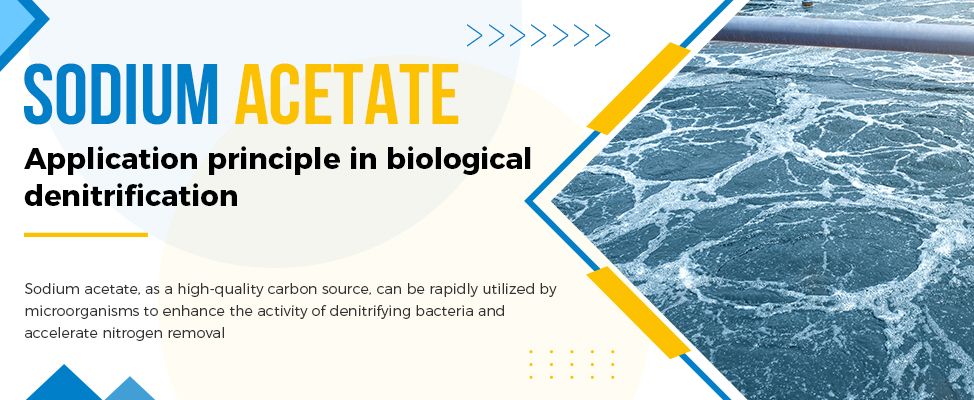
In biological nitrogen removal, a sufficient and available carbon source is essential for denitrifying bacteria. Sodium acetate is widely used because it is:
✅ Easily absorbed and metabolized by microorganisms;
✅ Non-toxic and safer than methanol;
✅ More stable than glucose, reducing side reactions.
During biological denitrification, nitrate (NO₃⁻-N) and nitrite (NO₂⁻-N) are reduced stepwise to nitrogen gas (N₂). Sodium acetate provides a fast, bioavailable carbon source that supports bacterial metabolism and electron transfer:
NO₃⁻ → NO₂⁻ → NO → N₂O → N₂↑
This efficient pathway ensures complete nitrogen removal while maintaining process stability.
The dosage of sodium acetate depends on total nitrogen (TN) concentration and influent C/N ratio.
● For C/N < 4, external carbon is recommended.
● Conduct jar tests to determine the optimal dosage.
● Overdosing may increase COD; underdosing leads to incomplete denitrification.
General rule:
To remove 1 mg NO₃⁻-N, approximately 2.86 mg COD is required. For sodium acetate, around 3.5 mg per mg TN is needed.
| Carbon Source | Advantages | Disadvantages | Typical Use |
|---|---|---|---|
| Methanol | Low cost | Toxic, flammable | Industrial systems |
| Glucose | Inexpensive | Unstable, sludge bulking risk | Food wastewater |
| Acetic acid | High biodegradability | Affects pH | High-load systems |
| Sodium acetate | Safe, stable, easy to use | Slightly higher cost | All denitrification systems |
● Municipal Wastewater: Enhances denitrification under low C/N conditions.
● Food Industry Wastewater: Provides stable and continuous carbon source.
● Industrial Wastewater: Effective for chemical and pharmaceutical effluents with high nitrogen content.
Q1: Does sodium acetate affect sludge properties?
A1: Proper dosage has no negative effect. Overdosing may cause sludge bulking.
Q2: Which is more economical — sodium acetate or methanol?
A2: Methanol is cheaper but poses safety concerns; sodium acetate is safer and more efficient.
Q3: Can sodium acetate be used with PAC or PAM?
A3: Yes, but it should be dosed separately to prevent interaction and excess COD.

Please contact us for free quotation by form below. We promise the quickest response within 24 hours: